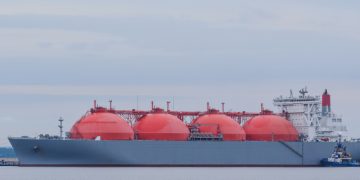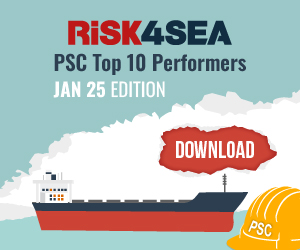Shipping costs for liquefied natural gas (LNG) cargoes have tumbled to five-year lows as newly built carriers added to the global fleet outpace shipping demand and shorter average journey times have increased vessel availability, Reuters reports.
Atlantic freight rates assessed for vessels with two-stroke engines capable of carrying 174,000 cubic meters of LNG, the most common type in the market, were at $4,250 per day on Tuesday, according to pricing agency Spark Commodities. Prices on Friday plunged to $3,500 a day, the lowest ever in Spark’s data which goes back five years.
The Atlantic rates are down 82% since the start of the year, and have dropped over 90% from the same time last year. Rates for the same class of ship on Pacific routes have nearly halved so far this year, dropping to $11,000 a day on Tuesday, Spark’s data showed. That is lowest ever for its dataset and is down nearly 80% from last year.
The global LNG fleet grew further in 2024, but global LNG loadings have only inched higher, leading to this oversupply of vessels as the market waits for a large increase in LNG export capacity over the next 18 months,
… said Deng Xiaoyi, deputy head of global LNG freight pricing at Argus, adding that charterers with extra shipping capacity at hand and shipowners are competing to let out their available vessels.
For the older but still common vessel with tri-fuel diesel engines carrying 160,000 cubic meters of LNG, Atlantic rates were negative for the past week, hitting a record low of minus $2,750 a day on Monday before paring losses to reach minus $1,000 a day on Tuesday, said Spark Commodities analyst Qasim Afghan.
Afghan noted that the only other instance of negative rates had occurred in February 2022, just before the Russian invasion of Ukraine, but had lasted for only two days. He explained that negative round-trip freight rates suggested shipowner earnings were insufficient to fully cover the fuel expenses required to ballast their vessels back to the load port for a round-trip voyage in the Atlantic basin.
Additionally, market sources had previously predicted that LNG shipping rates might continue to decline into 2025, as new tankers were being introduced at a faster pace than LNG production was increasing.
Higher delivered prices in Europe also incentivized U.S. cargoes to remain in the Atlantic versus travelling to Asia, increasing vessel availability as it results in shorter average journey times. At least six LNG cargoes were diverted from Asia to Europe in January.
Spark’s Afghan stated that Chinese tariffs on U.S. LNG, along with a record number of newbuild vessels expected to enter the market this year, would further contribute to the oversupply issue. He added that freight rates could remain at their current levels for the rest of the month.
He also mentioned that the U.S. arbitrage to Asia was expected to remain closed for the rest of 2025 and would require a significant shift in the JKM-TTF spread for market conditions to favor shipments to Asia. He referred to the price difference between Asia’s benchmark Japan-Korea-Marker (JKM) for LNG and European gas prices at the Dutch TTF hub.
On Tuesday, the TTF price stood at $15.76 per million British thermal units (MMBtu) compared to $14.41 per MMBtu for the JKM, Reuters concludes.
To remind, Drewry expects LNG shipping rates to soften further in 2025 as:
- 96 LNGCs are scheduled to be delivered next year, aggravating the oversupply situation;
- The additional 42 mtpa of new capacity will be insufficient to balance the fleet growth; and
- The demand outlook is mixed, varying regionally – a slight recovery is expected in Europe while Asia will remain the primary growth hub. Meanwhile, how the 2024-25 winter ends will be pivotal for Europe’s LNG demand next year.
The fleet is projected to grow 11% YoY in 2025, driven by high deliveries. Drewry expects the scrapping of steam turbine carriers to rise next year as these vessels invariably become idle with no re-employment opportunities and act as a ‘buffer’ in the total supply, further limiting any potential growth in rates. Considerable scrapping (of about 30-40 carriers) will be required to restore the supply-demand balance and stabilise rates next year.





























































